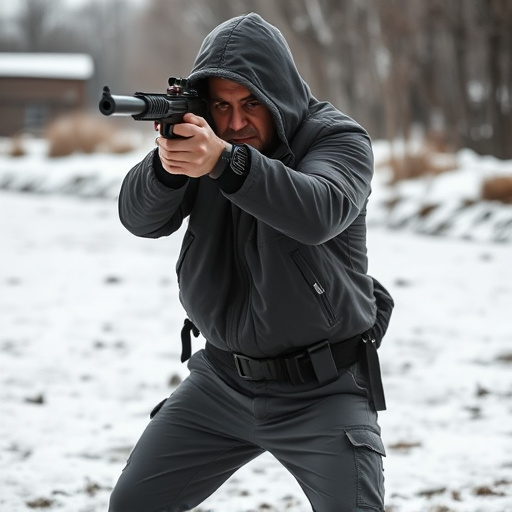Compact stun guns with integrated flashlights offer enhanced personal safety by combining lighting and electrical current delivery for neutralizing assailants in low-light conditions. Optimizing current distribution patterns through flashlight guidance improves performance, ensuring safe and effective use while adhering to legal guidelines and safety protocols.
Electrical current spread pattern analysis is crucial for understanding the effectiveness and safety of compact stun guns with flashlight integration. This article delves into the intricate mechanics of current flow in these devices, exploring how design and component interplay shape the dissemination of electric current. We analyze spread patterns to optimize stun effectiveness while discussing factors influencing radiation distance. Additionally, essential safety measures and best practices for operator protection are highlighted, making this a comprehensive guide for understanding compact stun guns’ electrical dynamics.
- Understanding Electrical Current Flow in Compact Stun Guns
- The Role of Flashlight Integration in Current Distribution
- Analyzing Spread Patterns for Optimal Stun Effectiveness
- Factors Influencing Electric Current's Radiation Distance
- Safety Measures and Best Practices for Gun Operation
Understanding Electrical Current Flow in Compact Stun Guns

Compact stun guns with integrated flashlights represent a modern twist on personal safety devices. To understand their inner workings, it’s essential to grasp how electrical current flows through these innovative tools. When activated, a compact stun gun delivers an electric charge via two metal prongs or contacts that make contact with the target. This direct current (DC) flow disrupts the nervous system, temporarily immobilizing the individual.
The flashlight function in these stun guns is more than just a convenience; it aids in targeting and visibility during low-light conditions. The electrical current spreads rapidly from the prongs, creating a powerful shockwave that can stun an assailant. This spread pattern is designed to maximize effectiveness while minimizing the risk of off-target shocks or accidental injuries.
The Role of Flashlight Integration in Current Distribution
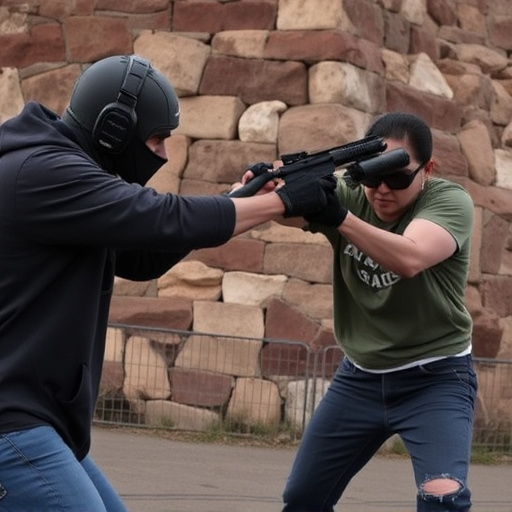
The integration of flashlights into compact stun guns has significantly impacted the analysis of current distribution patterns. These combined devices offer a unique advantage by providing both illumination and a means to measure electrical current. When activated, the flashlight function generates light, but simultaneously, its circuitry allows for the measurement and monitoring of current flow. This dual functionality is particularly valuable in understanding how electricity disperses within the stun gun’s design, highlighting critical points of potential energy concentration or dissipation.
This integration facilitates a more comprehensive assessment of current distribution, especially in compact stun guns where efficient energy management is crucial. By combining lighting and current measurement, researchers and engineers can gain deeper insights into the internal dynamics of these devices. This knowledge is essential for optimizing performance, ensuring safety, and enhancing overall efficiency, particularly when considering the design and development of advanced compact stun guns with enhanced functionality.
Analyzing Spread Patterns for Optimal Stun Effectiveness
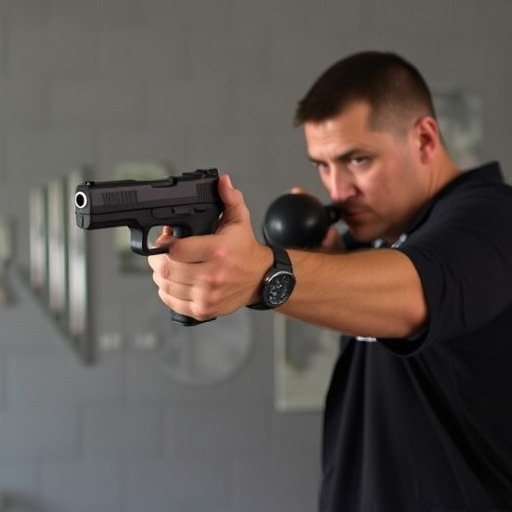
Analyzing the spread pattern of electrical current is a crucial aspect in determining the optimal effectiveness of stun devices, especially compact stun guns equipped with flashlights. These handheld weapons are designed to deliver powerful jolts for immobilization, and understanding how the current disperses can enhance their performance significantly. By studying the patterns, manufacturers and users can ensure that the energy is distributed evenly across the target area, maximizing impact while minimizing risks associated with excessive force.
In the case of compact stun guns, the flashlight feature plays a unique role in current dispersion. The light source can act as a guiding aid for the electrical current, enhancing its reach and intensity in specific directions. This strategic design allows users to target hard-to-reach areas or increase the overall effectiveness during self-defense scenarios, making these devices versatile tools for personal safety.
Factors Influencing Electric Current's Radiation Distance
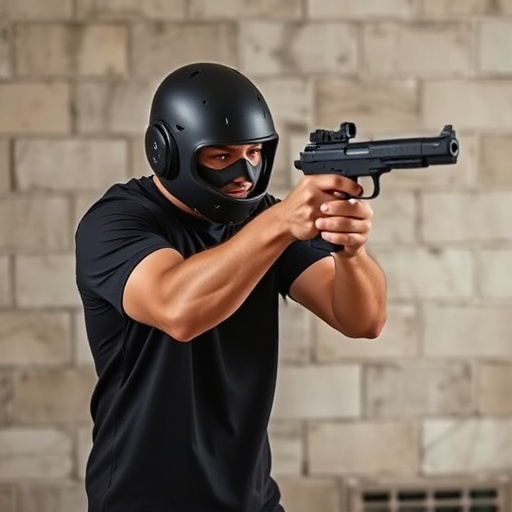
The radiation distance of electric current, especially in compact stun guns with integrated flashlights, is influenced by several key factors. One primary consideration is the device’s design and material composition; smaller, more efficient components can facilitate a longer current reach due to minimal energy loss. Additionally, the type and gauge of wiring play a significant role—thinner wires often result in higher resistance, which can limit current flow and thus reduce radiation distance.
External conditions also matter greatly. Environmental temperature affects electrical conductivity, with colder temperatures potentially impairing current transmission. Moreover, the presence or absence of conductive materials nearby can either enhance or obstruct the spread of electric current, impacting its overall range. These factors combined determine how effectively a compact stun gun’s current reaches its target, highlighting the importance of thoughtful design and material selection in achieving optimal performance.
Safety Measures and Best Practices for Gun Operation
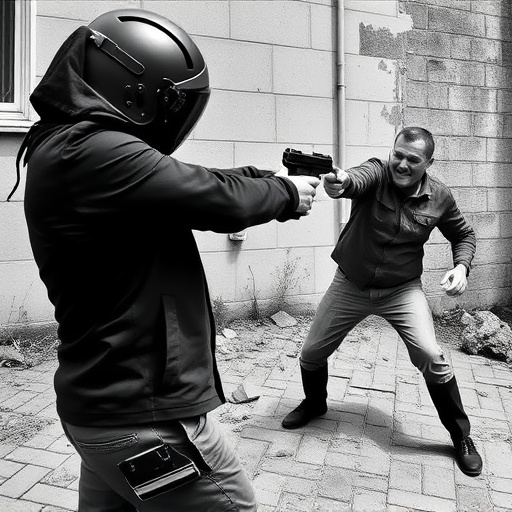
When operating compact stun guns with integrated flashlights, adhering to safety measures is paramount. These devices are powerful tools designed to incapacitate an assailant temporarily, but they should be handled with care to prevent accidents or unintended injuries. Always ensure you’re familiar with local laws and regulations regarding stun gun possession and use.
Best practices include keeping the device in a secure, dedicated holster when not in use, avoiding direct contact with metal objects or electrical devices, and never aiming it at any living being unless in immediate self-defense. Regular maintenance, such as battery replacement and periodic inspections for wear and tear, is crucial. Additionally, staying informed about proper deactivation procedures after use will help ensure the safety of yourself and others.
Compact stun guns with integrated flashlights offer a unique advantage in terms of current distribution and effectiveness. By analyzing the spread pattern of electrical current, users can optimize their impact while ensuring safety. Understanding how current flows and radiates from these devices is key to maximizing their potential as self-defense tools. This knowledge allows for informed decisions when choosing and using stun guns, making them more effective and safer in emergency situations.
